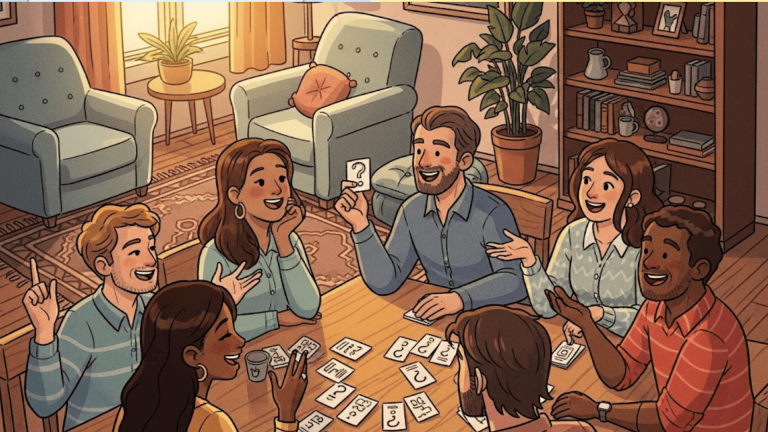Do Knock-Knock Jokes Enhance Creativity?

Imagine a world where laughter and learning go hand in hand. Knock-knock jokes, those simple yet delightful wordplays, might be more than just a source of giggles for preschoolers.
These playful exchanges, easily found as knock-knock jokes for free, could be secret weapons in fostering creativity among young minds.
While often overlooked, knock-knock jokes offer a unique blend of language play, social interaction, and cognitive challenges that may spark creative thinking unexpectedly.
This blog will explore the potential link between knock-knock jokes and creativity in children.
We’ll explore how these jokes work, their impact on language development, and their role in encouraging out-of-the-box thinking. You might see these classic quips in a new light by the end.
Do Knock-Knock Jokes Enhance Creativity?
The short answer is yes. Knock-knock jokes can indeed enhance children’s creativity.
These simple yet engaging jokes offer more than just laughs—they provide a playground for imaginative thinking and wordplay.
Creating and understanding knock-knock jokes involves a unique cognitive process. Children must think creatively to come up with unexpected punchlines or to grasp the clever twists of jokes they hear.
This mental exercise encourages them to view language and concepts from new angles, a key component of creative thinking.
For example, when children craft their knock-knock joke, they’re challenged to create a surprising punchline related to the setup.
Connecting seemingly unrelated ideas—a cornerstone of creativity—helps children develop their ability to think outside the box.
Consider this classic:
Knock knock! Who’s there? Boo. Boo who? Don’t cry. It’s just a joke!
Here, the child must creatively connect “Boo who?” with crying, demonstrating the kind of imaginative leap that fosters creative thinking skills.
Benefits of Knock-Knock Jokes

Knock-knock jokes offer children a wealth of developmental benefits beyond mere entertainment. Let’s explore how these simple jokes contribute to various aspects of a child’s growth:
Language Development
Knock-knock jokes are a playground for language skills. They introduce children to wordplay and puns, expanding their vocabulary and helping them understand that words can have multiple meanings.
For instance, jokes like “Knock knock! Who’s there? Lettuce. Lettuce who? Lettuce in, it’s cold out here!” teach children about homophones.
Moreover, the structured format of these jokes helps children grasp sentence construction in a fun, creative way.
Cognitive Development
These jokes are mini mental workouts. They require active listening and memory skills as children need to follow the joke’s setup and remember it to understand the punchline.
Anticipating punchlines also develop critical thinking skills as children learn to analyze language cues and make predictions.
Social Development
Knock-knock jokes are inherently social. They encourage turn-taking and active listening, key components of effective communication.
Sharing jokes also helps build social connections and friendships, providing children with a fun way to interact with peers and adults.
Emotional Development
Laughter is a natural stress reliever and mood booster. When children engage with knock-knock jokes, they’re having fun and developing emotional resilience.
Delivering a joke and making others laugh can significantly boost a child’s confidence and self-esteem.
Children unknowingly participate in a multifaceted developmental activity that supports their growth in language, cognition, social skills, and emotional well-being by engaging with knock-knock jokes.
Creativity Enhancement through Knock-Knock Jokes
Knock-knock jokes serve as a unique tool for enhancing creativity in children. Let’s explore how these simple jokes can spark imaginative thinking and improve memory retention:
Imaginative Thinking
Creating Jokes: When children invent knock-knock jokes, they exercise their creative muscles. They must devise unexpected punchlines that connect to the setup in surprising ways. This process encourages them to think beyond the obvious and explore unique associations between words and ideas.
For instance, a child might create:
Knock knock! Who’s there? Banana. Banana who? Banana split, so I’m here in two pieces!
This joke demonstrates creative thinking by connecting “banana” with “split” unexpectedly.
Storytelling: The structure of knock-knock jokes can inspire children to create mini-stories or skits. They might extend the joke into a longer narrative or even draw pictures to illustrate their jokes, fostering artistic expression alongside verbal creativity.
Memory Retention
Repetition: The repetitive nature of knock-knock jokes aids in memorization. Children unknowingly practice memory skills as they learn and repeat these jokes. This repetition helps solidify language patterns and new vocabulary in their minds.
Application: The creative thinking skills developed through knock-knock jokes can be applied to other areas of learning. For example, a child comfortable playing with language in jokes might find it easier to approach creative writing tasks or problem-solving activities in other subjects.
Conclusion
As we wrap up our exploration of knock-knock jokes and creativity, it’s clear these simple wordplays pack a powerful punch for young minds.
From enhancing language skills to fostering social connections, knock-knock jokes offer a treasure trove of benefits.
Most importantly, they serve as a playground for creativity, encouraging children to think outside the box and view the world through a more imaginative lens.
So, the next time you hear a knock-knock joke, remember: it’s more than just a giggle generator. It’s a tool for nurturing creative thinking, building confidence, and sparking joy in learning.
Why not challenge your child to create their knock-knock joke today? You might be surprised by the creative connections they make – and the laughter you’ll share along the way.






